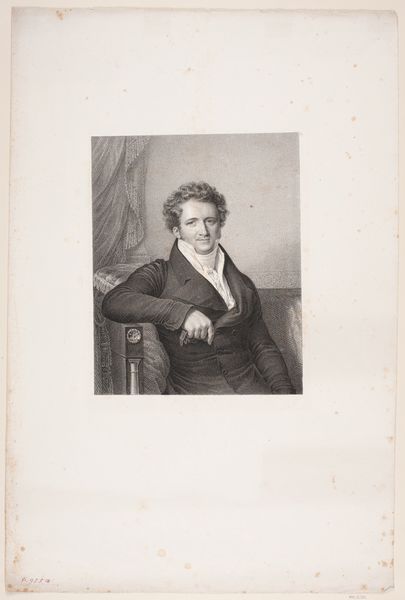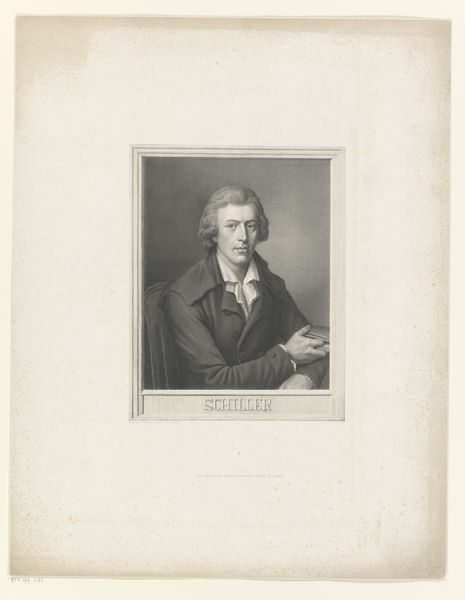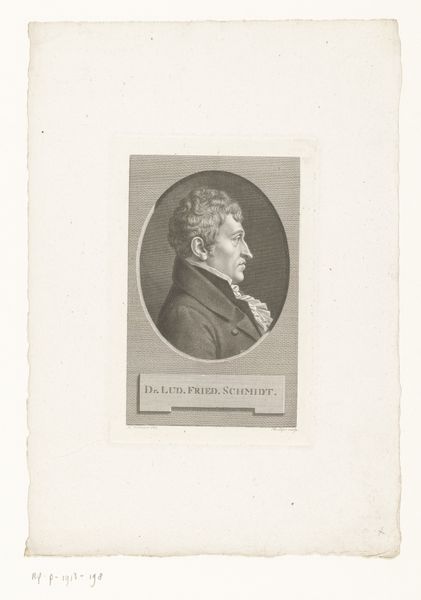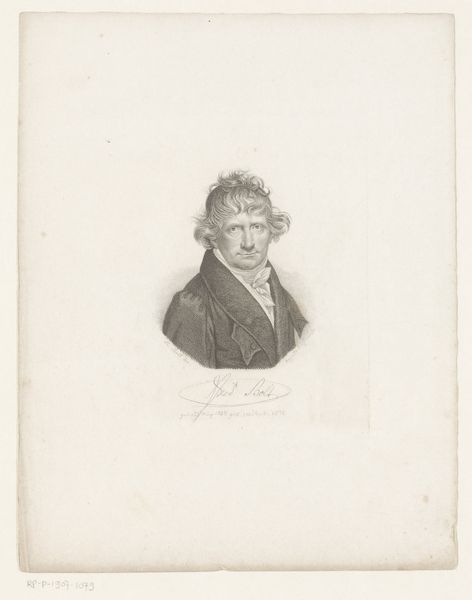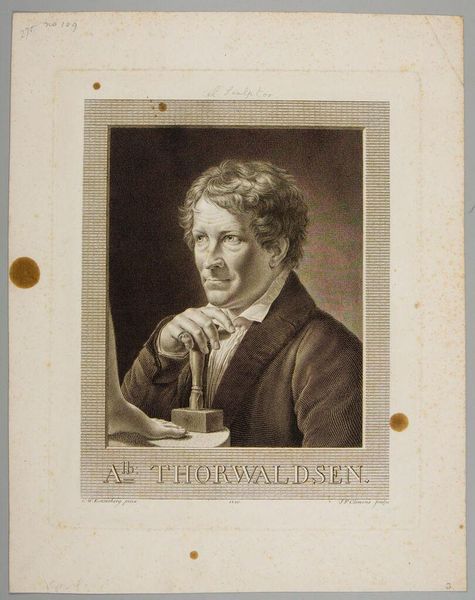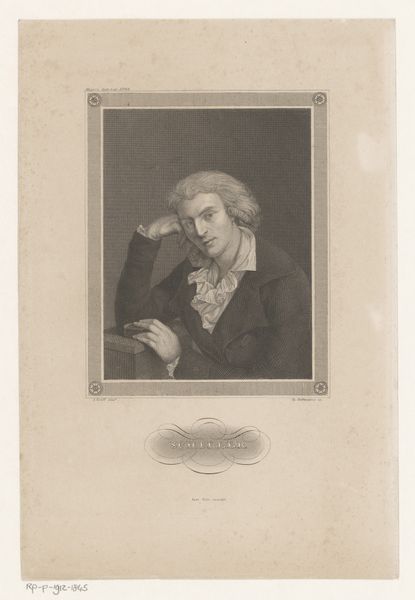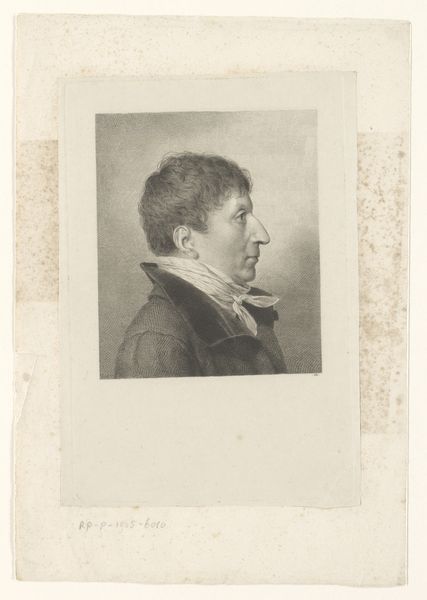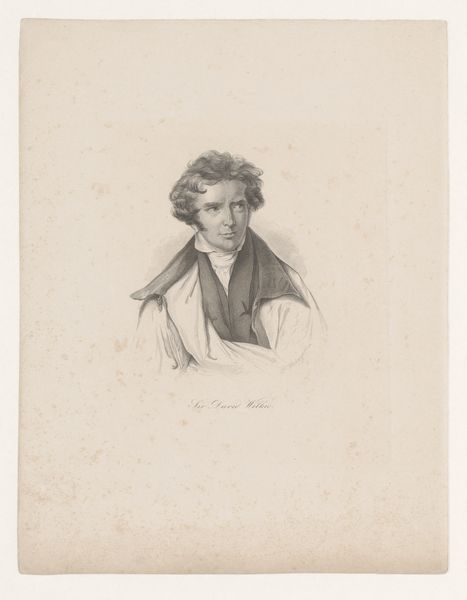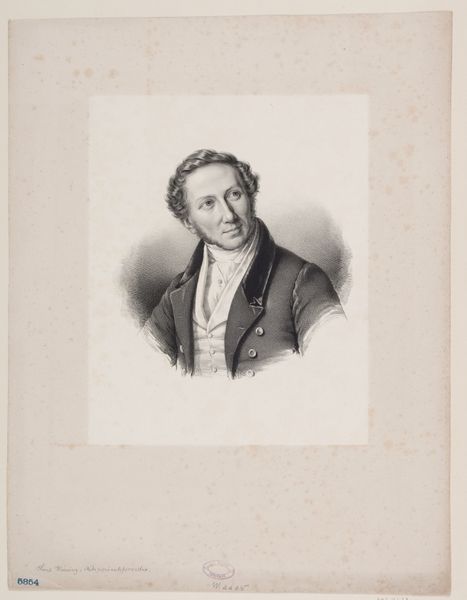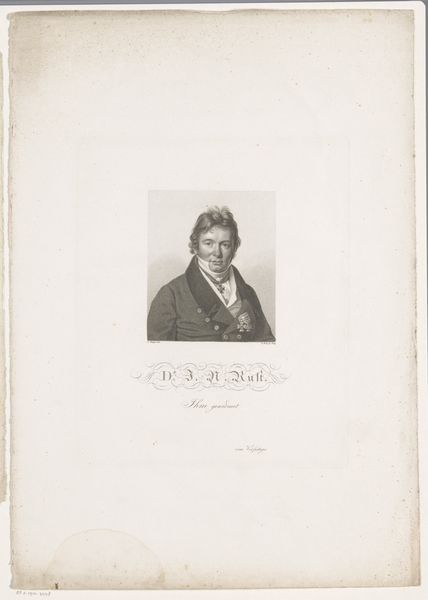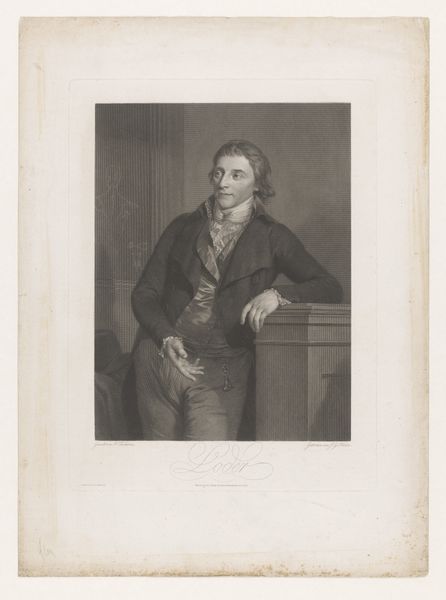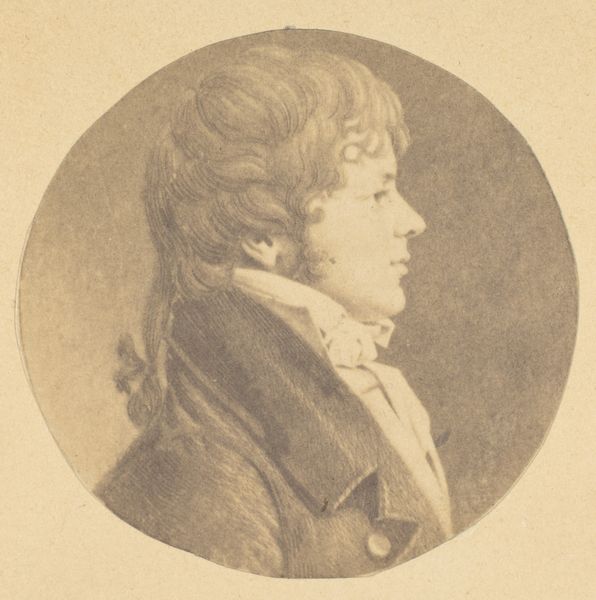
print, paper, engraving
portrait
neoclacissism
white palette
paper
engraving
Dimensions: 287 mm (height) x 230 mm (width) (plademaal)
Curator: Looking at this somber portrait, I feel a powerful connection to classical ideas of craftsmanship. Editor: I agree. J.F. Clemens produced this print of Bertel Thorvaldsen between 1820 and 1852. It's an engraving on paper, a wonderful example of neoclassical portraiture found here at the SMK. It certainly has a stately, formal mood. Curator: Exactly. The almost sepia tones enhance the impression of looking back to ancient models. His confident, yet somewhat weary gaze suggests someone very aware of the historical importance of their role. I also see the shadow of colonialism cast in his hand leaning against his craft. What was the cultural context in which it was made? Editor: Thorvaldsen achieved considerable international acclaim during his lifetime. It's worth thinking about the museum context, too. Statens Museum for Kunst, being the Danish national gallery, actively constructed a national artistic identity throughout the 19th century. Displaying works like this reinforces that idea, casting Thorvaldsen as a cornerstone of Danish art history and as someone aligned with European art. The almost eerie white palette is symbolic of his neutrality in times of revolution across Europe. Curator: But what of those marginalized during that neoclassical revival? Neoclassicism so often served as an aesthetic justification for empires, masking underlying power structures with a veneer of virtue. Doesn't that color symbolize exclusion? And do we consider its role in perpetuating racialized ideals of beauty? Editor: I concede your point that such representations are never neutral. But I see here less an active political statement, more a reflection of the dominant aesthetic values of the time—the institution’s embrace of idealized forms. Curator: Perhaps both can be true. Even without actively endorsing those ideals, this portrait nonetheless participates in a tradition that has had real-world consequences on those who were denied the luxury of white-marble-god status. Editor: Thank you for your compelling insight. By considering this piece, hopefully we can view these artists through multiple, evolving lenses. Curator: Agreed. It prompts necessary dialogues about historical privilege, representation, and who gets remembered, in what light.
Comments
No comments
Be the first to comment and join the conversation on the ultimate creative platform.
